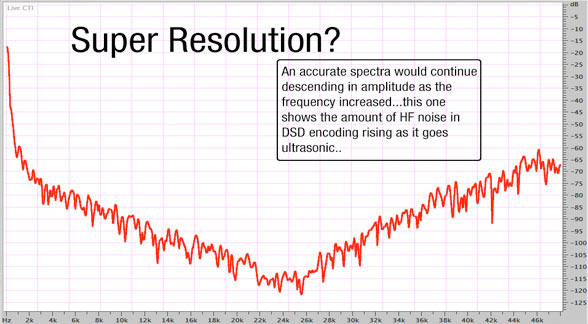Super-Resolution?
In my morning drift around the web, I happened on a YouTube video from the 2012 Newport Beach Audio Show. I’ve attended a couple of times, but I haven’t yet been an exhibitor. In my quest to do every show (certainly every show in North America), AIX Records has signed up for a sales table. I can’t afford a big demonstration room like in Chicago at AXPONA or the SSI in Montreal but I can certainly expose interested audiophiles to the benefits of HD-Audio and even surround sound.
This particular video was of interest to me because Michael Bishop and Cookie Marenco sat down to talk about DSD. Both are well respected audio engineers with years of experience in producing and engineering audio projects. And just as everyone involved in creating new recordings, they have favorite production methods, formats and equipment preferences.
Cookie Marenco and Michael Bishop at the Newport Beach Show talking about DSD.
In this particular 4-minute video they discuss the virtues of 1-bit DSD technology. I was particularly taken by the mention of “Super-Resolution” near the end of the video. According to Cookie, this is the first time that term had been used but she’s likes it and wants to see it used in the future. In a world that hasn’t yet figured out what is meant by high-resolution or high-definition audio, I found it curious to introduce a new term and then not tell the viewers what is means.
I guess by association with the topic of DSD, “super-resolution” means anything that is recorded with Direct Streaming Digital. But looking at some of the specifications and spectragraphs of DSD, I fail to see how it is a “move up”, as Michael states. I agree that it’s a viable format for archiving and delivering older analog masters. But it doesn’t work well for making new productions because of the lack of tools to do any post production work [Check out the interview with John Siau].
You might notice that in one of the pictures that is faded on the screen, she is standing next to an older 2″ analog tape machine. As I understand her work flow, she records to analog tape and then mixes to DSD for distribution. That may produce the “best” sounding recording for her but the limitations of analog tape are well known…at least as compared to HD-Audio. So it might be useful for a particular “sonic color” that she uses analog tape and DSD but the “audio band” available in DSD tops out at around 20 kHz…a perfect match for analog tape.
Is there anything “super” about using analog tape or even native DSD for new productions? Not if you know the limitations of the format. There are plenty of advocates that love the warmth of DSD over HD-Audio in PCM. But spinning DSD as a “Super-Resolution” format when its specs speak otherwise is misleading.

